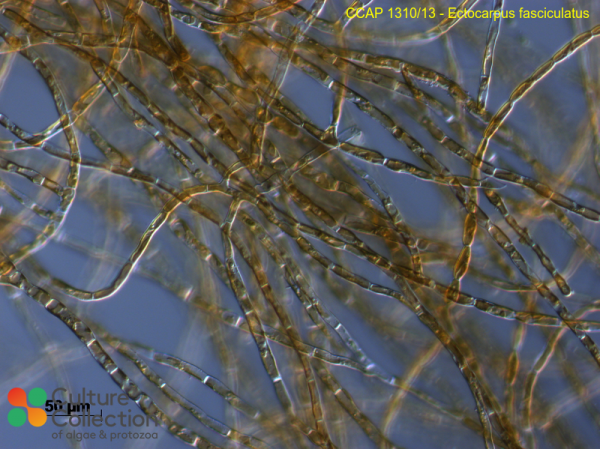Note: for strains where we have DNA barcodes we can be reasonably confident of identity, however for those not yet sequenced we rely on morphology
and the original identification, usually made by the depositor. Although CCAP makes every effort to ensure the correct taxonomic identity of strains, we cannot guarantee
that a strain is correctly identified at the species, genus or class levels. On this basis users are responsible for confirming the identity of the strain(s) they receive
from us on arrival before starting experiments.
For strain taxonomy we generally use AlgaeBase for algae and
Adl et al. (2019) for protists.
| Attributes | |
| Authority | Harvey 1841 |
| Isolator | Müller (1993) |
| Collection Site | in drift, epiphytic Plouescat, Brittany, France |
| Notes | Collection site: epiphytic on Laminaria hyperborea, Saccorhiza polyschides and Himanthalia elongata; female gametophyte derived from a sporophyte, which itself was constructed from 2 gametophytes resulting from meiospores produced by the field-collected sporophyte Ec fas Ros 93 31; This macroalgal culture contains bacteria and probably other organisms in low numbers, we are happy to provide further info on specific strains if you contact us |
| Axenicity Status | Bacteria and other organisms present |
| Area | Europe |
| Country | France |
| Environment | Marine |
| GMO | No |
| Group | Macroalgae |
| In Scope of Nagoya Protocol | No |
| ABS Note | Collected pre Nagoya Protocol. No known Nagoya Protocol restrictions for this strain. |
| Collection Date | c1993 |
| Original Designation | Ec fas Ros 93-31Z7 G12f |
| Pathogen | Not pathogenic: Hazard Class 1 |
| Strain Maintenance Sheet | SM_Ectocarpus.pdf |
| Toxin Producer | Not Toxic / No Data |
| Type Culture | No |
| Taxonomy WoRMS ID | 145404 |
| Equivalent Strains | KU-MACC 1107 |
| Other Designations | DGM 007-04 |
CCAP 1310/13
Ectocarpus fasciculatus
- Product Code: CCAP 1310/13
- Availability: See Availability/Lead Times

